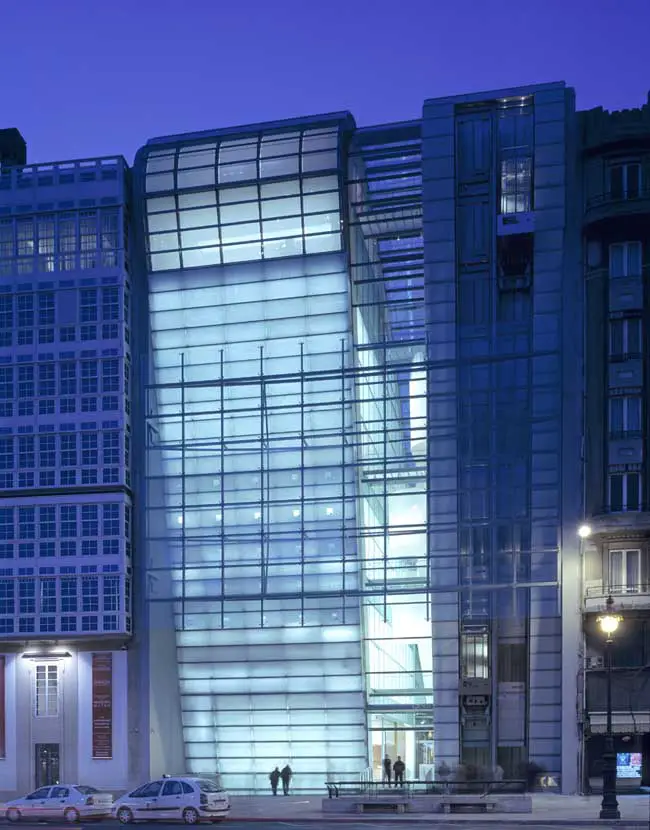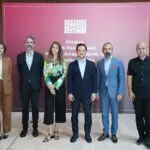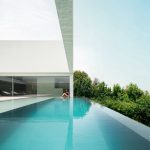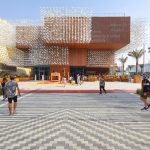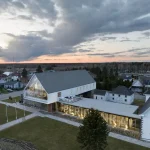Fundación Caixa Galicia, Spanish Architecture, La Coruña building by Grimshaw Architects
Fundación Caixa Galicia : La Coruña Architecture
Galicia Arquitectura, Espana, design by Grimshaw architects
Location: La Coruña, Spain
Design: Grimshaw architects
Fundación Caixa Galicia, La Coruña
CAIXA GALICIA ART FOUNDATION
Address: Cantón Grande, 24, 15003 A Coruña, Spain
Phone: +34 981 18 50 60
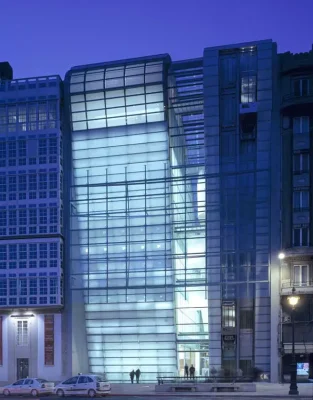
Fundación Caixa Galicia photo : Edmund Sumner
15 Jun 2006
Caixa Galicia
Caixa Galicia – Info from Grimshaw in 2006
Grimshaw’s first art gallery is dedicated to the respected financial institution, the Fundación Caixa Galicia. As well as space to house its art collection, the client sought a civic building that would draw the public realm inside, but that also provided private exclusive facilities for use by the institution.
The building accommodates temporary exhibition space and an auditorium in the lower ground floors and an Internet café and art bookshop on street level. The four permanent galleries occupy the upper floors and the director’s suite is located on the fifth and sixth floors.
The art gallery is located in a constrained site in an historic quarter of the city, filling the last ‘gap’ on a street of glazed galerias, which have become emblematic of the old town. The design needed to be sensitive to the distinctive architecture of its neighbours and conform to the dictates of the existing building heights; it required an imaginative response to provide a smooth graduation from the soaring front elevation overlooking the port, to the lower-lying associated administrative building that adjoins the site at the rear. As well as making this transition, the new building was required to set up an arresting dialogue between the historical and the contemporary.
The solution that emerged is a tilted paraboloid, best understood in its longitudinal section. The form’s apex peaks at the front elevation, before falling steeply down the street facade on an inverse incline and plunging below ground level.
The main elevation of the art gallery, on Calle Canton Grande, is clad with glass paneling that has a slender marble interlayer; this translucent skin imbues the building with a rich luminosity and allows daylight to permeate the building by day. In darkness, the building is softly illuminated. The glass panels on the main elevation also double as louvres. The curved rear facade is a composition of glass, marble and honeycomb aluminium.
A transparent holographic projection screen is suspended on the street facade; as well as providing opportunities for back projection, the screen acknowledges the street line, reconciling the building’s steeply raked front elevation with the perpendicular facades of adjacent buildings. Two panoramic lifts follow the incline of this facade, taking visitors from the lower ground floor to the fourth floor.
The art gallery has been described as a building of contradictions: open, yet closed;
connected yet clearly divided and articulated; very public but with carefully secluded private spaces. It is the full height atrium that creates these tensions; it spans the longitudinal section of the new build and forms the backbone of the building’s circulation.
It visually and physically ‘slices’ the building in section and is completely glazed, allowing daylight to flood the vertical circulation path – a prominent staircase that cantilevers into the space, dropping like an apple peel through the atrium, carving a sculptural presence in the central void.
The building’s belowground levels are housed in a granite base; this heavy, timeless material anchors the raked structure. The paving slabs used on the ground floor are also granite, echoing the external paving and providing a connection with the street environment. Finishing materials inside the gallery include marble, Venetian plaster, maple and cherry woods and white leather.
Daylighting is optimized wherever possible, although it can be mitigated through the use of the louvres. Where artificial lighting is relied upon, it is set into the fabric of the building to create unobtrusive illumination. Theatrical lighting focuses on the curves of the white plaster staircase, emphasizing its sculptural quality. The inclined facade creates a lightwell that opens the basement up to daylight.
The architect designed much of the furniture for the building, including the reception desks, the fifth floor conference facilities, the auditorium and the Internet pods on the ground floor.
Fundación Caixa Galicia – information from Grimshaw, architects, 141206
Fundación Caixa Galicia design : Grimshaw
Location: La Coruña, Spain, western Europe
Spanish Buildings
Contemporary Spanish Architecture
Aparcamiento Materno A Coruña, Galicia
Contemporary Madrid Architecture
Caixa Forum
Design: Herzog de Meuron
Caixa Forum Madrid
High Council – Chambers of Commerce
Design: Rafael de La-Hoz Arquitectos
Chambers of Commerce Madrid
Architects: Estudio Lamela
Bernabeu Stadium
Madrid Architecture Walking Tours by e-architect
Fundación Caixa Galicia architect : Nick Grimshaw
Buildings / photos for the La Coruña Architecture page welcome
Website: www.afundacion.org

